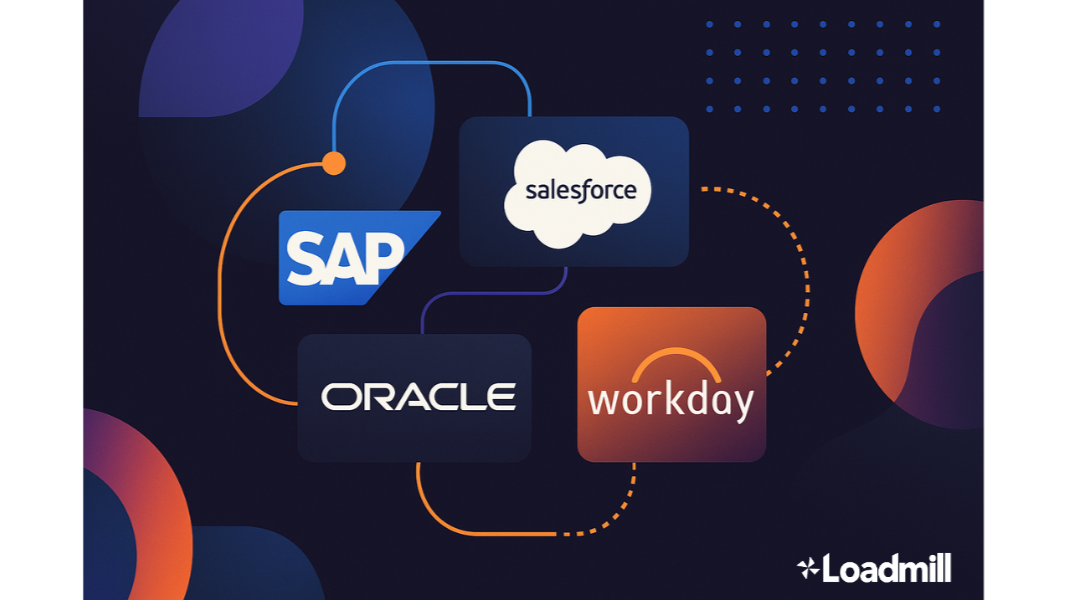Modern enterprise systems are rarely self-contained. A single business process say, fulfilling an online order can cross multiple applications, platforms, and vendors before it’s complete.
You might initiate a workflow in your web or mobile app, but fulfillment, billing, or customer record updates often rely on packaged apps like SAP, Salesforce, or Oracle. These systems sit at the heart of your operations, yet they often fall outside the scope of traditional testing pipelines.
That’s a problem.
🧠 What Are Packaged Apps and Why Do They Complicate Testing?
Packaged applications are pre-built enterprise systems designed to handle core business functions. You don’t control their codebase, but your teams customize and configure them to support critical workflows finance, HR, procurement, logistics, and more.
Because of this, testing these apps is not about validating their internal logic (that’s SAP’s job). It’s about ensuring that your business logic—the way you interact with and depend on these systems is functioning as expected.
Here’s where the complexity kicks in:
Workflows span multiple systems
: A single customer interaction can flow through web apps, APIs, Salesforce, and back-office ERP platforms.
You can’t fully mock these systems
: Attempting to simulate all side effects leads to blind spots.
UI automation is fragile and expensive
: Especially in legacy or heavily customized interfaces like SAP GUI.
Bottom line: packaged apps are outside your control, but the
business processes that rely on them are not
⚠️ Why Ignoring Packaged Apps Leads to Risk
In many orgs, test coverage is front-loaded toward customer-facing applications. But serious defects often arise after the frontend when:
Orders fail to post in SAP.
Customer records aren’t synced with Salesforce.
Inventory systems fall out of sync with fulfillment centers.
These aren't UI bugs they’re system integrity failures that hurt operational continuity and customer trust.
If your tests end where your frontend ends, you’re not seeing the full picture.
🛠️ What End-to-End Testing Should Look Like
A real-world business process might look like this:
A customer places an order through your mobile app.
Your internal system posts an update to SAP for fulfillment.
The status is synced to a delivery partner.
A confirmation is sent back to the mobile app.
Testing this requires:
Observing how your custom logic interacts with SAP’s APIs.
Validating data propagation across systems.
Ensuring asynchronous updates complete reliably.
Decoupling tests from brittle UI selectors or SAP-specific automations.
In other words, you need business-process validation, not UI regression checks.
🚀 Where Loadmill Fits in the Enterprise Testing Stack
In large-scale environments, managing test coverage across heterogeneous systems demands a strategy that emphasizes data flow, not screen flow.
Loadmill supports this with a traffic-based, API-first testing model that aligns well with packaged app scenarios:
It captures real user flows and network activity whether in your own apps or third-party systems like SAP allowing you to extract meaningful business logic from actual usage.
Its AI engine generates test cases by identifying functional operations and filtering out noise (e.g., non-deterministic or UI-only events).
Teams can iteratively shape these tests to reflect their true operational context
, integrating them into broader end-to-end test pipelines.
Instead of relying on brittle UI scripts or reverse-engineering every edge case, Loadmill gives engineering teams a way to observe, codify, and validate complex workflows even when they cross black-box systems.
It's not about testing SAP itself. It's about testing the connective tissue between systems where your business lives and where failures are most expensive.
🧭 Final Takeaway: Own the Flow, Not Just the Code
Packaged apps will always be part of the enterprise stack. But just because you don’t write the code doesn’t mean you can skip testing them.
Your systems are only as strong as the integrations between them. By shifting your strategy from testing interfaces to validating end-to-end processes, you gain visibility into what really matters: the uninterrupted flow of your business.
And with the right tooling API-aware, observability-driven, and built for scale testing packaged apps becomes a solvable, sustainable part of modern quality engineering.

